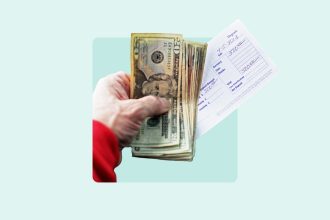Key takeaways
- The IBR forgiveness pause leaves some borrowers at risk of a tax bill if it extends into 2026.
- Borrowers who filled out their IDR application before March 2025 may need to reapply.
- The public has until September 17 to comment on proposed PSLF changes.
Borrowers seeking student loan forgiveness through the Public Service loan Forgiveness (PSLF) program or Income-Based Repayment (IBR) plan have hit several roadblocks in 2025. With IBR forgiveness paused, income-driven repayment program applications bottlenecked and PSLF facing eligibility changes, more than 1 million federal student loan borrowers are stuck in financial limbo. But there are steps they can take to gain their footing.
IBR forgiveness pause could have tax implications
In July, the U.S. Department of Education (ED) suspended student loan forgiveness under the IBR plan while the department updated its systems. At the time, IBR was the only federal student loan payment plan still offering forgiveness. Earlier in the year, a court injunction paused student loan forgiveness under the SAVE, ICR and PAYE plans.
As of September 2, the ED still is not awarding forgiveness to borrowers who’ve earned it by completing the terms of their IBR plans.
“At this point, we’re at a loss, because the Department of Education took this sudden action. We also have not been provided any guidance or any dates in which they anticipate bringing back IBR discharge,” says Sabrina Calazans, executive director of the Student Debt Crisis Center (SDCC).
The SDCC isn’t the only group waiting for further information. In August, Senator Bernie Sanders and 10 other colleagues sent a letter to ED Secretary Linda McMahon demanding clarity on the pause.
One major concern the senators raise: the financial consequences the pause could have if it’s still in effect come tax season.
What this means for borrowers
Under the American Rescue Plan, any loan amount forgiven under an income-driven repayment (IDR) plan such as IBR between 2021 and 2025 would be exempt from taxes. However, that exemption runs out January 1, 2026. If borrowers don’t get that forgiveness before then, they could face tax bills in the hundreds or thousands of dollars, depending on their outstanding balance.
While borrowers wait to see if they get what Sanders says is “legally mandated debt relief,” they can take action by making the politicians who represent them aware of their concerns.
As constituents, reach out to your lawmakers. Make it very clear that this is happening so that lawmakers can put pressure on the Department of Education to resume that processing.
— Sabrina Calazans, Student Debt Crisis Center
Private lenders eye borrowers jumping ship from federal loans
As legal challenges and rule changes frustrate federal student loan borrowers, private student loan lenders are offering federal loan-like benefits.
Read on
New report shows over 1.3 million IDR applications still not processed
A new status report on IDR application processing shows that the ED has only processed 304,844 requests between July 1 and July 31, leaving 1.3 million applications to the IDR program still pending. Additionally, 3,280 PSLF buyback requests were processed while 72,730 applications are pending.
There are a few reasons for the delay in processing. Court injunctions put in place earlier this year caused a temporary pause in processing, which created a backlog of nearly 2 million applications that an understaffed department is struggling to tackle.
Additionally, data errors and a new form may have caused some applications to be ignored completely.
What this means for borrowers
According to Calazans, the ED removed the “SAVE” and “lowest monthly payments” options on the application form earlier this year. Anyone who marked either of those options on the old form may have had their application “tossed out” — possibly unbeknownst to those applicants.
“We at Student Debt Crisis Center are recommending anyone who has applied for an income-driven repayment plan prior to March of this year to resubmit an application,” says Calazans, who has heard from borrowers who applied in November and are still in limbo. She also recommends opting for the IRS integration — it means shorter processing times for some borrowers, the SDCC has observed.
While borrowers wait, it’s imperative they continue making scheduled payments. Dig into your loan terms, keep track of your progress and reach out to your servicer if you have questions or concerns.
“We don’t want anyone to end up in collections, we don’t want anyone to have their credit score impacted, and so, you know, go to studentaid.gov, look into your loan situation, and look for organizations such as Student Debt Crisis Center,” says Calazans. “We offer monthly webinars for folks free of charge. [This assistance] is at studentaid.gov as well. You can find resources there.”
Public comment on proposed PSLF changes open until September 17
On August 18, the ED issued a Notice of Proposed Rulemaking that changes eligibility under the PSLF program. According to the notice, employers may become ineligible for the program if the administration deems the services they provide “unlawful,” This may include such services as gender-affirming care or providing legal aid to undocumented immigrants. However, the exact type of work was not made clear.
The PSLF program forgives student loan debt of eligible government and nonprofit workers after 120 consecutive student loan payments. It was created to incentivize public sector jobs, which are necessary, but often low-paying, careers. Calazans notes that the program has been — and remains — popular among both Democrats and Republicans. However, these proposed changes may shift that.
“It shows us that, if you do not agree with the Department of Education or with the Trump administration, that you are a target, and you could potentially lose access to this program,” she says. “Essentially, at any point, the department can say that, ‘Okay, your employer actually just doesn’t qualify,’ and it’s based on whatever they determine it to be… This is a clear sign of government overreach.”
Calazans worries that these changes will deter people from going into certain careers and put people in financial limbo, especially those who are close to forgiveness and planning for homeownership.
And the rules don’t just affect people who directly participate in work the government deems ineligible. For example, if a hospital provides gender-affirming care, all of its employees could become ineligible, according to Calazans. “Everyone from the janitor to the CEO would no longer qualify for [PSLF], even though they’re not partaking in those activities,” she says.
What this means for borrowers
If you’re in the PSLF program and work for an employer that provides services listed in the proposed rulemaking, your eligibility may be at risk. Keep track of your public service loan forgiveness, talk to your employer and share your concerns with the Department of Education.
It is important to note that these rules, set to go into effect July 2026, are currently proposed changes only. The public has the opportunity to comment on whether they support or oppose these changes and can do so until Sept. 17, 2025. The SDCC encourages everyone — borrowers, students and the general public — to submit public comments, which can be done directly in the notice on FederalRegister.gov.

How to influence student loan policy with public comments
The U.S. Department of Education is required to respond only to substantive comments. To maximize your impact, leave a comment that helps the federal agency make an informed decision by including facts, data and opinions supported by evidence.
Read on
Why we ask for feedback
Your feedback helps us improve our content and services. It takes less than a minute to
complete.
Your responses are anonymous and will only be used for improving our website.
Help us improve our content
Read the full article here
















